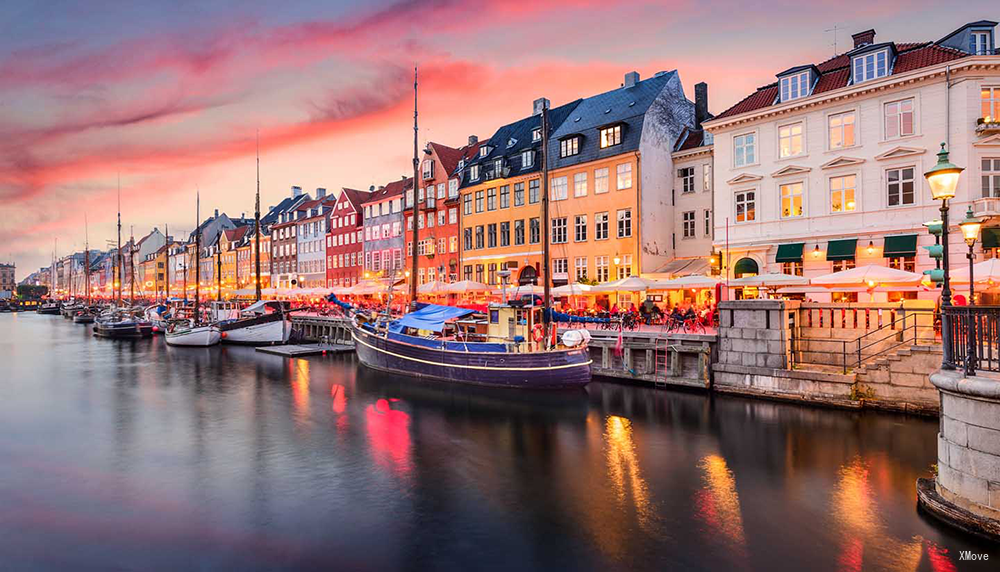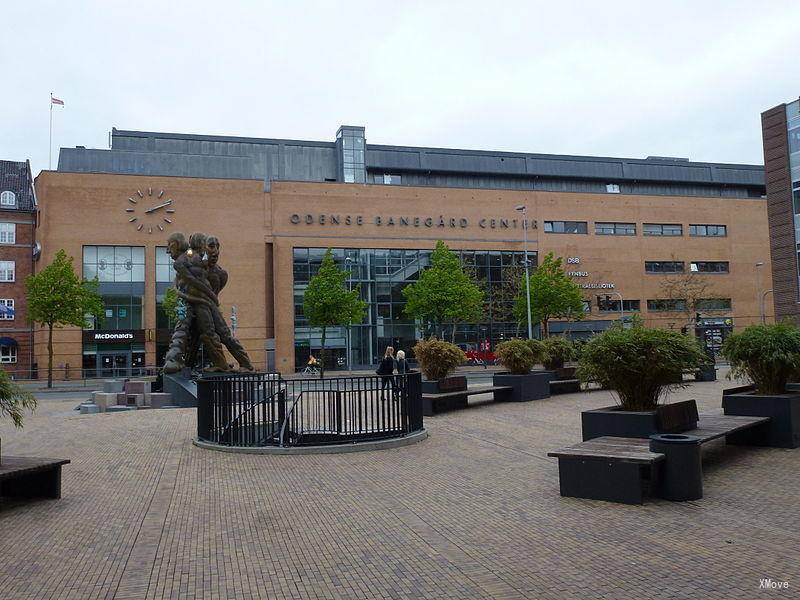Odense St to Copenhagen: Trains, Buses, Fares, Today's Connections, Routes, Duration, Types of Trains, Station Guides, Tips, Journey
Denmark Train Tickets
Train schedule Odense St to Copenhagen(Koebenhavn)
Popular train routes departing from Odense St
* Venlo
* Mannheim Central(Mannheim Hbf)
* Emden Hbf
* Prague Central(Praha Hlavní Nádraží (Prag Hl. N.))
* København
* Svendborg St
* Flensburg
Popular train routes arriving in Odense St
* Gare Centrale D'amsterdam(Amsterdam Centraal)
* Münster (Westf) Hbf(Münster(Westf)Hbf)
* Poznan Gl.
* Strasbourg
* Aéroport De Lubeck(Lübeck Flughafen)
* Katowice
* Hambourg(Hamburg Hbf)
Popular train routes departing from Copenhagen(Koebenhavn)
* Berlin Central Station(Berlin Hbf)
* Maastricht
* Berlin Hohenzollerndamm
* Rotterdam Centraal
* Odense St.
* Essen Central(Essen Hbf)
* Hamburg Central(Hamburg Hbf)
Popular train routes arriving in Copenhagen(Koebenhavn)
* Landgraaf
* Wismar
* Frankfurt
* Dresden Hbf
* Aalborg St
* Estação Central De Nuremberg(Nürnberg Hbf)
* Estação Central De Wuppertal(Wuppertal Hbf)

Odense (, also US: , Danish: [ˈoðˀn̩sə] ) is the third-largest city in Denmark. It has a population of 178,210 as of January 2016, and is the main city of the island of Funen. By road, Odense is located 45 kilometres (28 mi) north of Svendborg, 144 kilometres (89 mi) to the south of Aarhus and 167 kilometres (104 mi) to the southwest of Copenhagen. The city is the seat of Odense Municipality and was the seat of Odense County until 1970, and Funen County from 1970 until 1 January 2007, when Funen County became part of the Region of Southern Denmark. Odense has close associations with Hans Christian Andersen who is remembered above all for his fairy tales. He was born in the city in 1805 and spent his childhood years there. There has been human settlement in the Odense area for over 4,000 years, although the name was not mentioned in writing until 988, and by 1070, it had already grown into a thriving city. Canute IV of Denmark, generally considered to be the last Viking king, was murdered by unruly peasants in Odense's St Alban's Priory on 10 July 1086. Although the city was burned in 1249 following a royal rivalry, it quickly recovered and flourished as a centre of commerce in the Middle Ages. After a period of decline, large-scale plans for development were made during the 18th century, which led to the rebuilding of Odense Palace and the building of a canal to the Port of Odense, facilitating trade. In 1865, one of the largest railway terminals in Denmark was built, further increasing the population and commerce, and by 1900, Odense had reached a population of 35,000. Odense's Odinstårnet was one of the tallest towers in Europe when built in 1935 but was destroyed by the Nazis during World War II. The University of Southern Denmark was established in 1966. In the present day, Odense remains the commercial hub of Funen, and has a notable shopping district with a diversity of stores. Several major industries are located in the city including the Albani Brewery and GASA, Denmark's major dealer in vegetables, fruits and flowers. The city is home to Odense Palace, erected by King Frederik IV who died there in 1730, the Odense Theatre, the Odense Symphony Orchestra, and the Hans Christian Andersen Museum, situated in the house that was the birthplace of Hans Christian Andersen. In sports, Odense has a number of football clubs including OB, BM, B1909, and B1913, the Odense Bulldogs professional ice hockey team, and the city also hosts the H.C. Andersen Marathon. Odense is served by Hans Christian Andersen Airport and Odense station, which lies on the line between Copenhagen and the Jutland peninsula.
Odense - Guide, Attractions, Tours, Sightseeings | Train from/to Odense | Popular RoutesCopenhagen (Danish: København [kʰøpm̩ˈhaʊ̯ˀn] ) is the capital and most populous city of Denmark. As of July 2018, the city has a population of 777,218 (616,098 in Copenhagen Municipality, 103,914 in Frederiksberg Municipality, 43,005 in Tårnby Municipality, and 14,201 in Dragør Municipality). It forms the core of the wider urban area of Copenhagen (population 1,320,629) and the Copenhagen metropolitan area (population 2,057,737). Copenhagen is situated on the eastern coast of the island of Zealand; another small portion of the city is located on Amager, and it is separated from Malmö, Sweden, by the strait of Øresund. The Øresund Bridge connects the two cities by rail and road. Originally a Viking fishing village established in the 10th century in the vicinity of what is now Gammel Strand, Copenhagen became the capital of Denmark in the early 15th century. Beginning in the 17th century it consolidated its position as a regional centre of power with its institutions, defences and armed forces. After a plague outbreak and fire in the 18th century, the city underwent a period of redevelopment. This included construction of the prestigious district of Frederiksstaden and founding of such cultural institutions as the Royal Theatre and the Royal Academy of Fine Arts. After further disasters in the early 19th century when Horatio Nelson attacked the Dano-Norwegian fleet and bombarded the city, rebuilding during the Danish Golden Age brought a Neoclassical look to Copenhagen's architecture. Later, following the Second World War, the Finger Plan fostered the development of housing and businesses along the five urban railway routes stretching out from the city centre. Since the turn of the 21st century, Copenhagen has seen strong urban and cultural development, facilitated by investment in its institutions and infrastructure. The city is the cultural, economic and governmental centre of Denmark; it is one of the major financial centres of Northern Europe with the Copenhagen Stock Exchange. Copenhagen's economy has seen rapid developments in the service sector, especially through initiatives in information technology, pharmaceuticals and clean technology. Since the completion of the Øresund Bridge, Copenhagen has become increasingly integrated with the Swedish province of Scania and its largest city, Malmö, forming the Øresund Region. With a number of bridges connecting the various districts, the cityscape is characterised by parks, promenades and waterfronts. Copenhagen's landmarks such as Tivoli Gardens, The Little Mermaid statue, the Amalienborg and Christiansborg palaces, Rosenborg Castle Gardens, Frederik's Church, and many museums, restaurants and nightclubs are significant tourist attractions. The largest lake of Denmark, Arresø, lies around 27 miles (43 kilometers) northwest of the City Hall Square. Copenhagen is home to the University of Copenhagen, the Technical University of Denmark, Copenhagen Business School and the IT University of Copenhagen. The University of Copenhagen, founded in 1479, is the oldest university in Denmark. Copenhagen is home to the FC København and Brøndby football clubs. The annual Copenhagen Marathon was established in 1980. Copenhagen is one of the most bicycle-friendly cities in the world. The Copenhagen Metro launched in 2002 serves central Copenhagen. The Copenhagen Metro is scheduled to expand radically with the opening of the City-ring line during fall 2019, the new line will connect all inner boroughs of the city by metro, including The Central Station, and will open up 17 new stations for Copenhageners. The new metro line is a part of the city's strategy to transform mobility towards sustainable modes of transport such as public transport and cycling as opposed to automobility. Additionally the Copenhagen S-train, the Lokaltog (private railway) and the Coast Line network serves and connects central Copenhagen to outlying boroughs. The Copenhagen-Ringsted Line will relieve traffic congestion in the corridor between Roskilde and Copenhagen. Serving roughly two million passengers a month, Copenhagen Airport, Kastrup, is the busiest airport in the Nordic countries.
Copenhagen - Guide, Attractions, Tours, Sightseeings | Train from/to Copenhagen | Popular Routes
Denmark Train Tickets
Hot Journeys
* Rome(Roma) -> Venice(Venezia)
* Frankfurt -> Munich(Müchen)
* Rome(Roma) -> Milan
* Arth -> Milan
* Interlaken -> Lucerne(Luzern)
* Seoul(서울) -> Jeonju Si(전주시)
* Warsaw(Warszawa) -> Berlin(Berlin)
* Florence -> Rome(Roma)
* Busan(부산) -> Seoul(서울)
* Frankfurt -> Dusseldorf(Düsseldorf)
* Kaohsiung(高雄) -> Taipei(台北)
* Kyoto(京都) -> Tokyo(東京)
* Naples -> Rome(Roma)
* Munich(Müchen) -> Berlin(Berlin)
* Interlaken -> Swiss Alps Jungfrau Aletsch
* Paris -> Frankfurt
* Rovaniemi(Rovaniemi) -> Helsinki(Helsinki)
* Naples -> Florence
* Munich(Müchen) -> Dusseldorf(Düsseldorf)
* Stuttgart -> Frankfurt Airport(Frankfurt Flughafen)
* Dusseldorf(Düsseldorf) -> Frankfurt Airport(Frankfurt Flughafen)
* Prato(Prato) -> Florence
* Florence -> Prato(Prato)
* Barcelona -> Madrid(Madrid)
* Frankfurt Airport(Frankfurt Flughafen) -> Cologne(Köln)
* Frankfurt -> Berlin(Berlin)
* Barcelona -> Valencia





